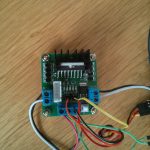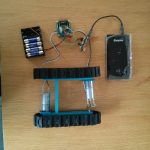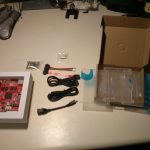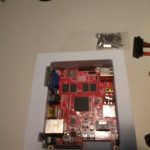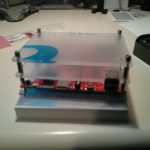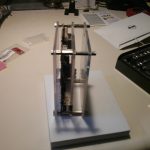Today I wanted to know, what this little blinking lights on my [amazon &title=CubieTruck&text=CubieTruck] mean.
There are four, which you find out if you use:
root@cubietruck:/# ls /sys/class/leds/
blue:ph21:led1 green:ph07:led4 orange:ph20:led2 white:ph11:led3
(or just look at it while it is running, usually it blinks a lot)
So if you want to know what each blink means you can ask the [amazon &title=CubieTruck&text=CubieTruck] like that:
root@cubietruck:cd /sys/class/leds/ root@cubietruck:/sys/class/leds# ls blue:ph21:led1 green:ph07:led4 orange:ph20:led2 white:ph11:led3 root@cubietruck:/sys/class/leds# cat green:ph07:led4/trigger none rfkill0 battery-charging-or-full battery-charging battery-full battery-charging-blink-full-solid ac-online usb-online [mmc0] mmc1 timer heartbeat cpu0 cpu1 default-on rfkill1 rfkill2 root@cubietruck:/sys/class/leds# cat blue:ph21:led1/trigger none rfkill0 battery-charging-or-full battery-charging battery-full battery-charging-blink-full-solid ac-online usb-online mmc0 mmc1 timer [heartbeat] cpu0 cpu1 default-on rfkill1 rfkill2 root@cubietruck:/sys/class/leds# cat orange:ph20:led2/trigger none rfkill0 battery-charging-or-full battery-charging battery-full battery-charging-blink-full-solid ac-online usb-online mmc0 mmc1 timer heartbeat [cpu0] cpu1 default-on rfkill1 rfkill2 root@cubietruck:/sys/class/leds# cat white:ph11:led3/trigger none rfkill0 battery-charging-or-full battery-charging battery-full battery-charging-blink-full-solid ac-online usb-online mmc0 mmc1 timer heartbeat cpu0 [cpu1] default-on rfkill1 rfkill2
So by default the
- green LED is indicating if there is any read write with the SD Card
- blue LED is heartbeating
- orange LED is CPU0 load
- white LED is CPU1 load
In case you want to turn off the LEDS, use this code:
# turn off LEDs echo 0 > /sys/class/leds/blue:ph21:led1/brightness echo 0 > /sys/class/leds/green:ph07:led4/brightness echo 0 > /sys/class/leds/white:ph11:led3/brightness echo 0 > /sys/class/leds/orange:ph20:led2/brightness
See here for more information.


